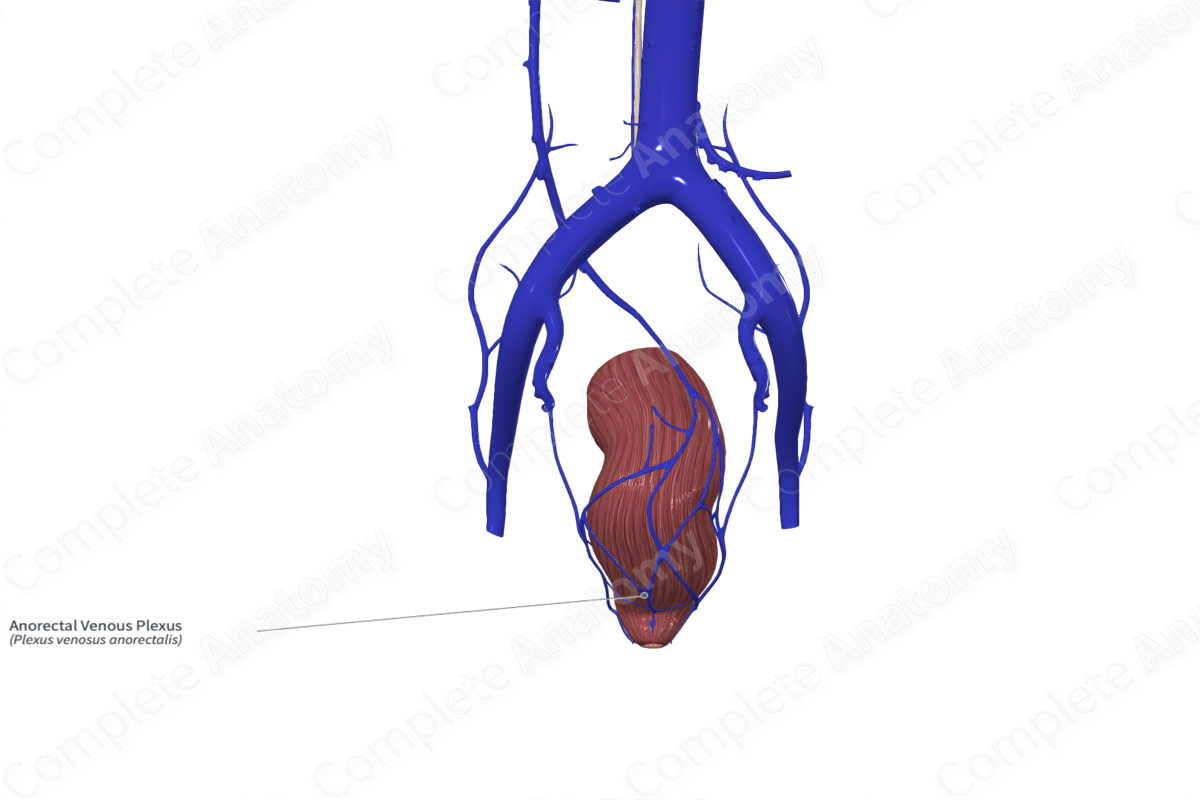
Quick Facts
Origin: Network of vessels surrounding anal canal and inferior rectum.
Course: Vessels lie within the mucosa of the rectum and upper anal canal, draining them via the inferior, middle, and superior anorectal veins.
Tributaries: Connects with vesical plexus (males) or uterovaginal plexus (females).
Drainage: Rectum and upper anal canal.
Origin
The anorectal venous plexus predominantly surrounds the anal canal and the lower part of the rectum.
Course
The plexus consists of a network of internal (submucosal) and external (subepithelial) veins that connects anteriorly with the vesical plexus in males or the uterovaginal plexus in females. Veins within the anorectal venous plexus normally appear varicose (dilated and tortuous).
Tributaries
The anorectal venous plexus may receive tributaries from the vesical plexus in males or the uterovaginal plexus in females.
Supplied Structures
The plexus drains into the systemic circulation via the inferior and middle anorectal veins (through the internal pudendal and internal iliac veins, respectively), and the portal venous circulation via the superior anorectal vein (through the inferior mesenteric vein).
Due to its drainage into both the systemic and portal venous system, the anorectal venous plexus acts as an area of portacaval anastomosis.
List of Clinical Correlates
- Hemorrhoids (thromboses in the external venous plexus)
Learn more about this topic from other Elsevier products





